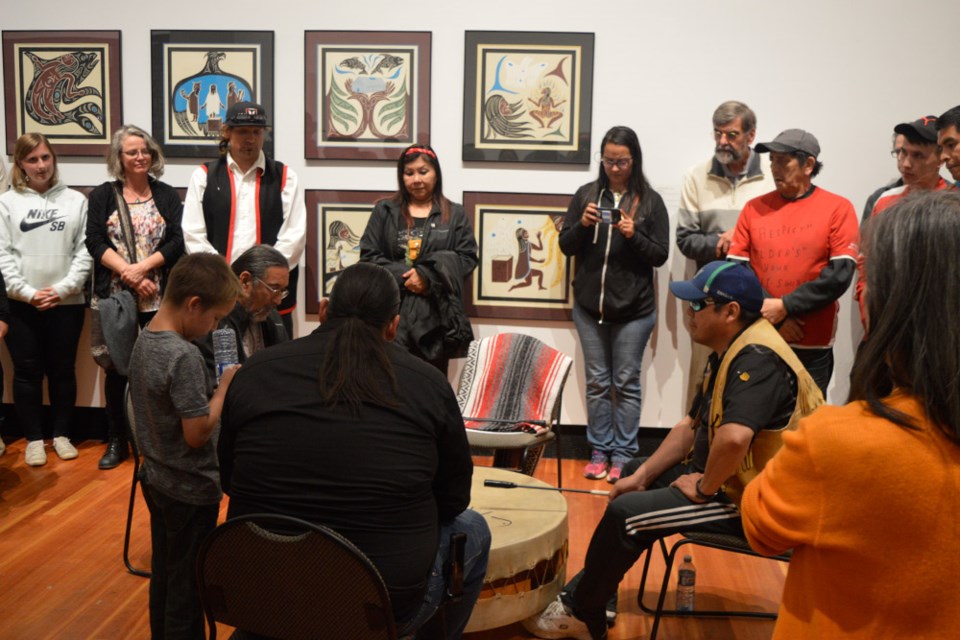A sense of healing through art.
That’s what visitors can take away with them after viewing a unique exhibition on now until Oct. 6 at Two Rivers Gallery called REDRESS, Sacred Obligation: Indigenous Voices on Reconciliation.
It features a diverse collection of works from 22 Indigenous artists from across BC and Alberta who have used their unique voices to express feelings on the residential school experience of First Nations people. The exhibition includes installation, painting, drawing, sculpture, prints, video and beadwork.
“The voices of the First Nations people have taken various approaches to their work. There are reflections of sadness and pain, mixed with hope,” says Indigenous Curator, Rose Spahan, who along with the gallery’s Curator & Artistic Director, George Harris, developed the exhibition. “So, it has a lot of emotions from different perspectives on the residential schools, growing up and the sacredness of life.”
While some corners of society may urge a move forward and past this hurtful history, the exhibition seeks to express the profound effects residential schools had on those they touched.
“You cannot have that opinion if you understand the depth of the impact this had on so many people over such a long period of time. So many of those experiences were hidden away or brushed under the rug,” Harris says. “Sometimes these artworks are personal reflections or memories of family members. And while the focus is on residential schools, ultimately this exhibition encompasses considerations around government policy, religion, colonization, cultural genocide. The impact is far-reaching and generational.”
“The history of Canada hasn’t been so kind to First Nations with regards to cultural genocide,” Spahan says, pointing to the detriment incurred by prohibiting the use of First Nations languages in the residential schools.
“It’s important to tell the story and have these voices heard, which sometimes talk about terrible things,” Harris says.
“The work itself is part of the process of healing,” Spahan says. “Equally important is that people listen to the voices embodied by this artwork.
Viewing the exhibition and gaining an understanding and feeling of the artists are steps towards healing.”
“My fond hope is that people would leave this exhibition far more informed than previously and that would ultimately lead to a very positive impact as we embark along this path towards understanding and redress,” Harris adds.
For more about the exhibition, visit the gallery website tworiversgallery.ca, click on the Experience Art tab and scroll down to the Current Exhibitions section.



